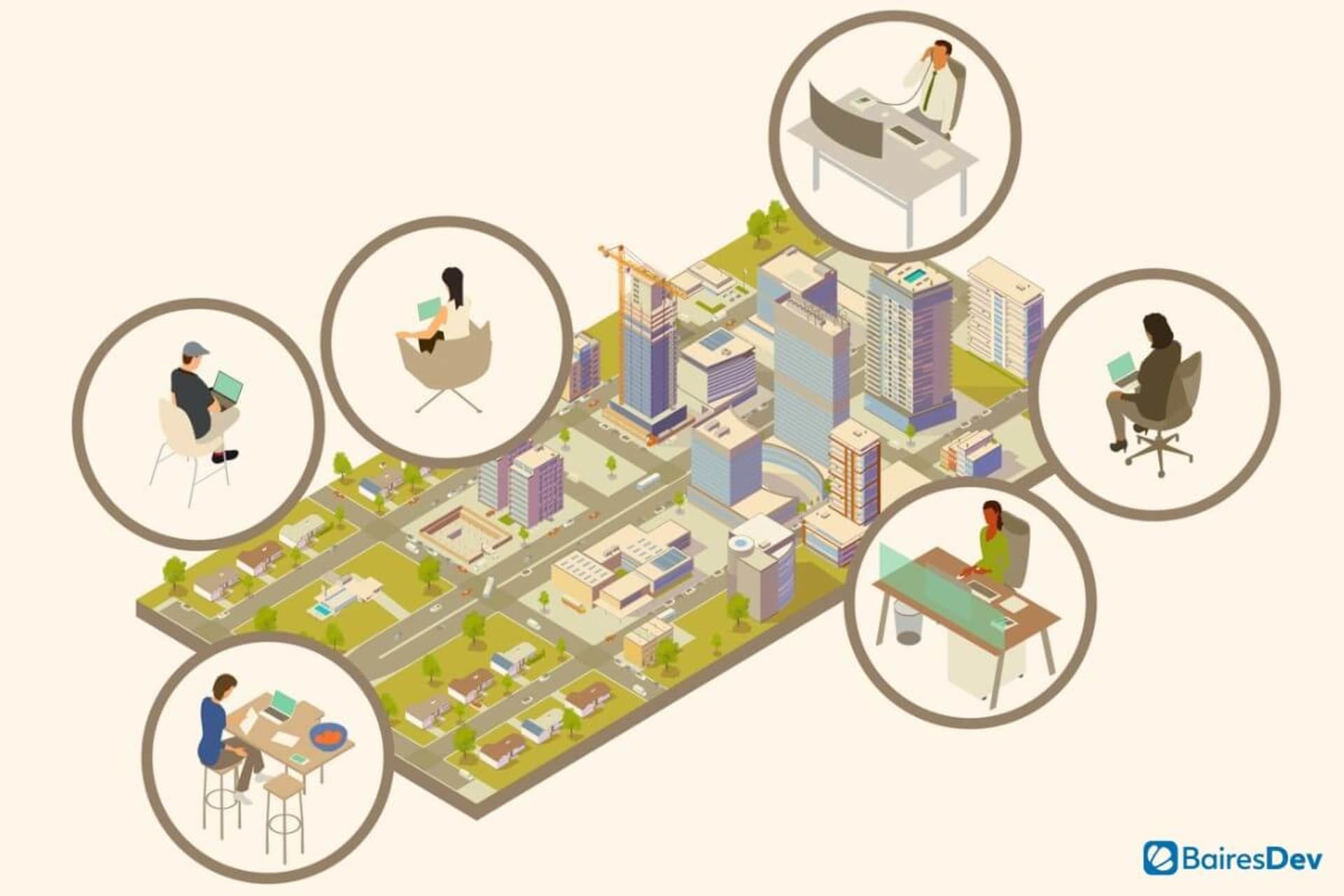In 2022, the global hyperscale data center market is projected to reach 71.2 billion USD, a CAGR of 20.7% from 2016–2022.
A vital tool for storing, scaling, and improving cloud services, hyperscale and its associated data centers have had a global impact, with every major cloud service provider and many smaller and mid-sized ones embracing the concept to accommodate the vast amounts of data they support.
What’s new and emerging in the world of hyperscale?
What, Exactly, Is Hyperscale?
Hyperscale is a concept that refers to a technological infrastructure’s ability to scale its cloud computing systems as it gains or loses resources, data, and servers. It’s critical for meeting the demands of organizations, particularly in a data-laden world. By embracing hyperscale, organizations can achieve a number of benefits, such as stronger performance and a lower possibility of system failures or downtime.
Hyperscale is commonly referred to alongside data centers. There is an advantage to using hyperscale data centers, especially for large organizations that grapple with big data and vast amounts of information.
Thanks to this system, businesses have an easier time limiting redundancies, finding data and making it readily available, instituting strong security protocols, and maintaining cost-effective procedures and infrastructure.
How Does It Work?
Hyperscale involves a network of servers that are added or subtracted as demand dictates. There are also stipulated performance requirements. Resource capacity can be adjusted without hardware or additional equipment. The design is simple and can efficiently regulate the flow of information via horizontal, integrated networking.
Providers like Facebook, Amazon, Google, and other tech giants leverage the hyperscale to govern the flow of data — and scale their networks accordingly.
What Is a Hyperscale Data Center?
A hyperscale data center is much larger than common data centers, often with the capacity to store millions of servers. They are physically enormous, occupying thousands upon thousands of square feet, and can accommodate vast amounts of data traffic.
The infrastructure is straightforward, with a design that streamlines the flow of information and enables customization to meet the organization’s demands. The process of hyperscale and data management is entirely automated.
Hyperscale Trends in 2022
1. Unprecedented Growth
Data centers in general are exploding as organizations of all types and sizes generate and house enormous amounts of data. In the highly digital age, hyperscale data centers are becoming the go-to resource for businesses to manage these vast amounts of information.
Many experts have been predicting that the need for hyperscale data centers will surge in 2022, as organizations expand and seek to accommodate more and more information. The demand spans countries and continents, while businesses face greater demands of higher speeds.
Companies will need to form new partnerships and work closely with hyperscale data center providers to accommodate the growing demand for these services.
2. Green Data Centers
Sustainability models are, of course, critical in every capacity. Now, there is an increasing emphasis on green technology — including the construction and development of green data centers. The Global Hyperscale Data Center Market report identifies this trend as one of the many reasons why hyperscale data centers have become so pivotal.
These data centers, in contrast to their more traditional counterparts, offer more environmentally friendly infrastructure and techniques. Their reliance on cloud computing over complex, energy-inefficient machinery and architecture allows businesses to accommodate vast amounts of data without contributing to a larger carbon footprint.
In fact, a report by Pike Research recently found that cloud computing alone could have reduced the global IT carbon footprint by 38% — and green data centers would play a pivotal role.
3. IoT and Hyperscale
The Internet of Things (IoT) isn’t a new concept — it’s been steadily becoming a fixture of our daily lives and work lives at a rapid rate in recent years. But as the IoT grows and evolves into a new phenomenon, affecting people and businesses around the globe, it’s generating an unprecedented amount of data.
As the IoT expands, it’s critical to find solutions to protect sensitive information at scale. Hyperscale data centers offer a robust, secure resource to house, transfer, and otherwise leverage data. This is why these 2 concepts are so compatible and can transform the very nature of how we manage our information.
4. Geographic Emphasis
One factor developers need to pay attention to is that of location. According to Kevin Facinelli at Nortek, developers seek out geographic areas where there is an abundance of water and power resources, as well as “favorable” climates. But these constraints can be quite limiting.
“One solution that offsets all these challenges is the specification of cooling equipment that operates efficiently in almost any climate or resource-challenged geographic areas,” Facinelli said. And thanks to new advancements, we could have the technology that can fuel hyperscale data centers in locations with “unfavorable” climates and resources. They have the potential to exist and operate practically anywhere.
This is beneficial for the protection and flow of data since most locales want to limit and control the transportation of information and keep it within their borders.
Hyperscale is contributing to — and, in many ways, driving — a revolution in data management. As a new era of big data emerges, we are seeing unprecedented growth in the generation and spread of information. Hyperscale is a critical model for the safekeeping, housing, and regulation of important information and a tool businesses of all sizes are increasingly embracing. This is set to be a revolutionary year for the rise of hyperscale.






